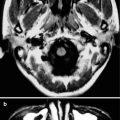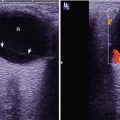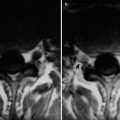(1)
Radiology Department Beijing You’an Hospital, Capital Medical University, Beijing, People’s Republic of China
Abstract
Gene engineering, also called genetic engineering or recombinant DNA technique, has been a newly emerging technology since 1970s. Its principle is to artificially isolate biological genetic materials (usually DNA) for their being cleaved, incorporated, restructured, transferred and expressed in vitro. Generally, it involves four steps. The first step is the cloning of the target gene to obtain the needed DNA segments. The second step is to obtain the recombinant DNA by connecting the target gene with DNA vector. The third step is to introduce the recombinant DNA into the bacteria or mammalian cells for its proliferation. And the last step is to screen the receptor cells that express the target genes for expression of the corresponding proteins and other products. The recombinant DNA technique is one of the most commonly used technologies in molecular biology, which has been widely applied in scientific research and the clinical detection of HIV.
Keywords
Recombination DNA techniquesNucleic acid hybridization1.1 Application of Modern Molecular Biology in HIV Research
1.1.1 Recombination DNA Techniques
Gene engineering, also called genetic engineering or recombinant DNA technique, has been a newly emerging technology since 1970s. Its principle is to artificially isolate biological genetic materials (usually DNA) for their being cleaved, incorporated, restructured, transferred and expressed in vitro. Generally, it involves four steps. The first step is the cloning of the target gene to obtain the needed DNA segments. The second step is to obtain the recombinant DNA by connecting the target gene with DNA vector. The third step is to introduce the recombinant DNA into the bacteria or mammalian cells for its proliferation. And the last step is to screen the receptor cells that express the target genes for expression of the corresponding proteins and other products. The recombinant DNA technique is one of the most commonly used technologies in molecular biology, which has been widely applied in scientific research and the clinical detection of HIV.
Two companies, ViroLogic (San Francisco, CA) and Virco (Mechelen, Belgium), are the first two companies that improved phenotypic analysis technology on the basis of recombinant DNA technique for the phenotype drug resistance detection. The improved phenotypic analysis technique skips the procedure of virus isolation, shortens the detection time, automize the detection procedures and saves manpower, and thus ensures the experimental stability and reproducibility. The phenotypic detection technique developed by ViroLogic, Pheno Sense [1], is to obtain HIV-1 protease genes and reverse transcriptase genes from the HIV-infected patients by adopting RT-PCR amplification and to prepare a viral vector containing the recombinant genes segments by recombination DNA techniques. The vector carries a luciferase labelled gene that replaces the HIV envelope gene. The protease and reverse transcriptase genes of the HIV-infected patients are recombined with the vector for the genetic hybridization to form a recombinant virus. The recombinant virus proliferates at the presence of tested drugs, and the expression level of luciferase is concurrently examined. By comparing to the standard virus strain sensitive to drugs, the logarithmic graph of the drug concentrations can be drawn and IC50 value can be calculated. The technique developed by Virco [2] is to insert the amplified protease genes and reverse transcriptase genes into standard HIV strains containing both of the two genes and to transfect a CD4 T cell line for a recombinant HIV strain containing protease and reverse transcriptase genes from HIV-infected patients. Under a light microscope with high resolution, the drug susceptibility IC50 of the recombinant virus to different antiviral drugs can be real-time read by monitoring recombinant virus cultured with different drugs or with the same drug of different concentrations.
1.1.1.1 Development of HIV Vaccine
AIDS genomes contain genes like gag, pol and env. The proteins encoded by these genes possess many important epitopes which stimulate the body to produce various specific antibodies. Some of these antibodies with neutralizing activities can inhibit or partially slow down the invasion of the virus and others can fight against the virus. Years ago some scientists had already used recombinant DNA technique to construct important epitopes of these genes into the expression vector for their recombination and expression in vitro to produce vaccines. Thus effective attacks would be initiated targeting proteins encoded by these genes. In addition, by using genetic engineering/recombinant DNA technique, a pseudovirus, being deprived of pathogenicity with partial HIV activity to encode HIV proteins but being incapable of invasion, can be developed. This discovery builds a technology platform for the manufacture of plentiful, safe and economical AIDS vaccine and for the development of ways to detect drug resistance. Currently in the U. S., an HIV vaccine has been developed to produce HIV antibodies in animals. The experiments on the vaccine are in progress. And its application in clinical practice is expected.
1.1.2 Application of Nucleic Acid Hybridization in HIV Research
Nucleic acid hybridization is one of the most widely applied technique in biochemical and molecular biological studies, which is a powerful tool for the qualitative or quantitative detection on the sequences of the specific RNA or DNA segments. It is developed on the basis of complementary base pairing. The hydrogen bond that holds the double strands can be broken down (denaturalized) and thus the double strands can be separated into two single strands if heated in alkaline conditions or the denaturants are added. At the moment, the heterologous DNA or RNA (single strand) will be put in and insulated in a certain ionic strength and temperature (renaturation). If there are complementary base sequences between the heterologous DNA or RNA, the nucleic acid molecules will be hybridized during the renaturation.
Gene chip is an improved molecular hybridization technique developed in recent years, with rapid development and widespread application in clinical practice. In just a few years, it has been primarily applied to detect the genic mutations and analyze the genetic expressions of the human-related diseases like tumor and genetic diseases. Nucleic acid hybridization has been widely used in HIV clinical research as the following.
Stay updated, free articles. Join our Telegram channel

Full access? Get Clinical Tree







